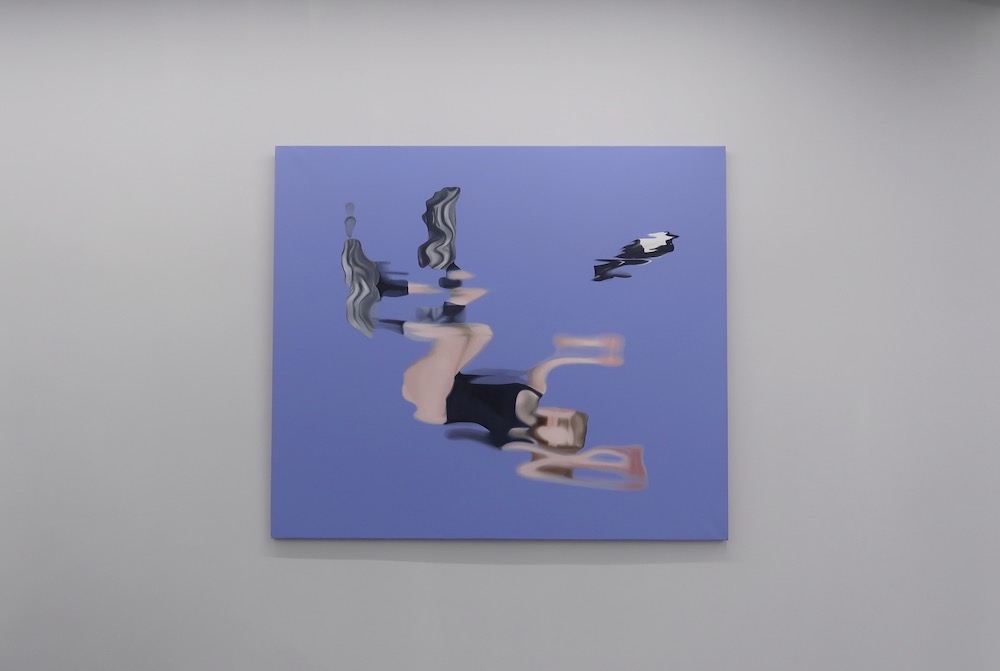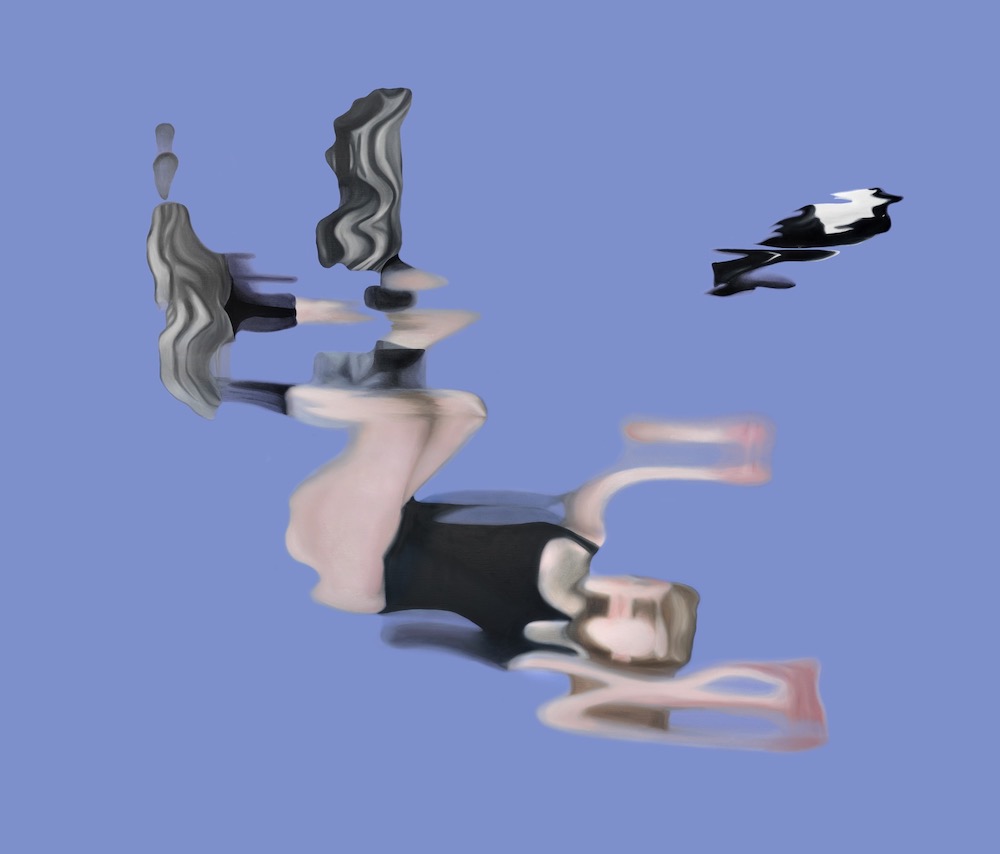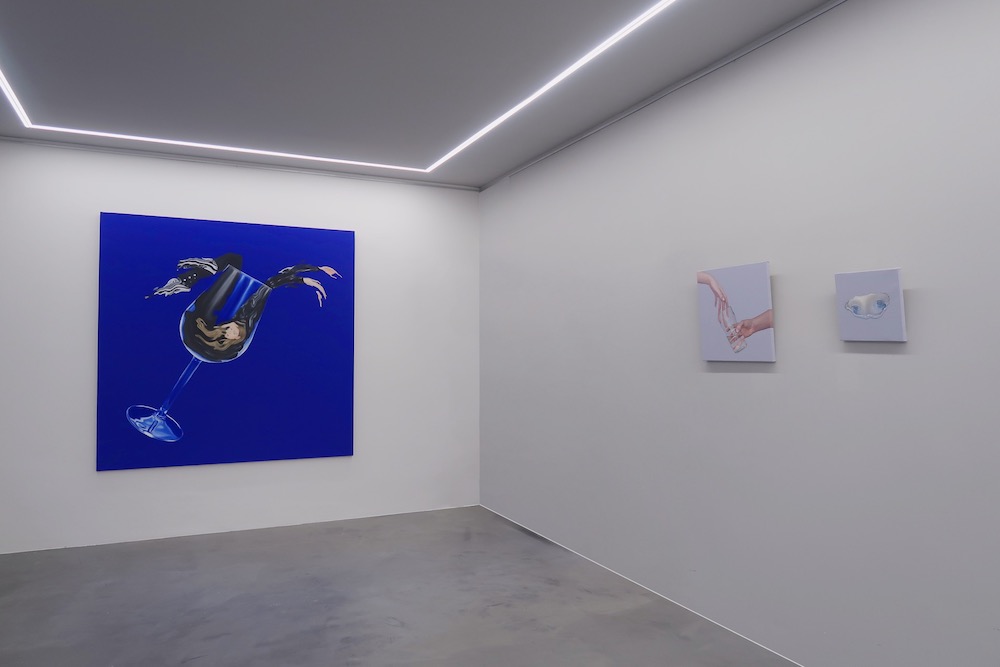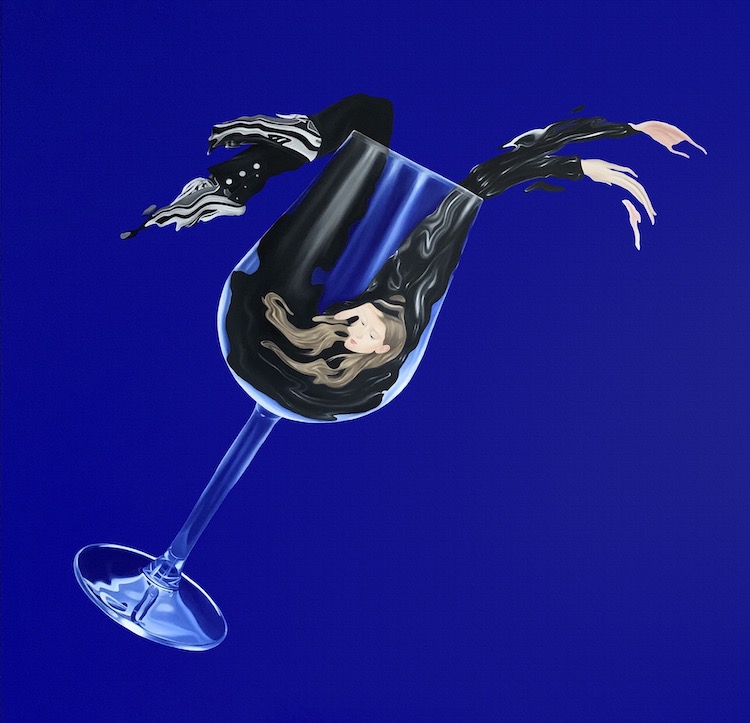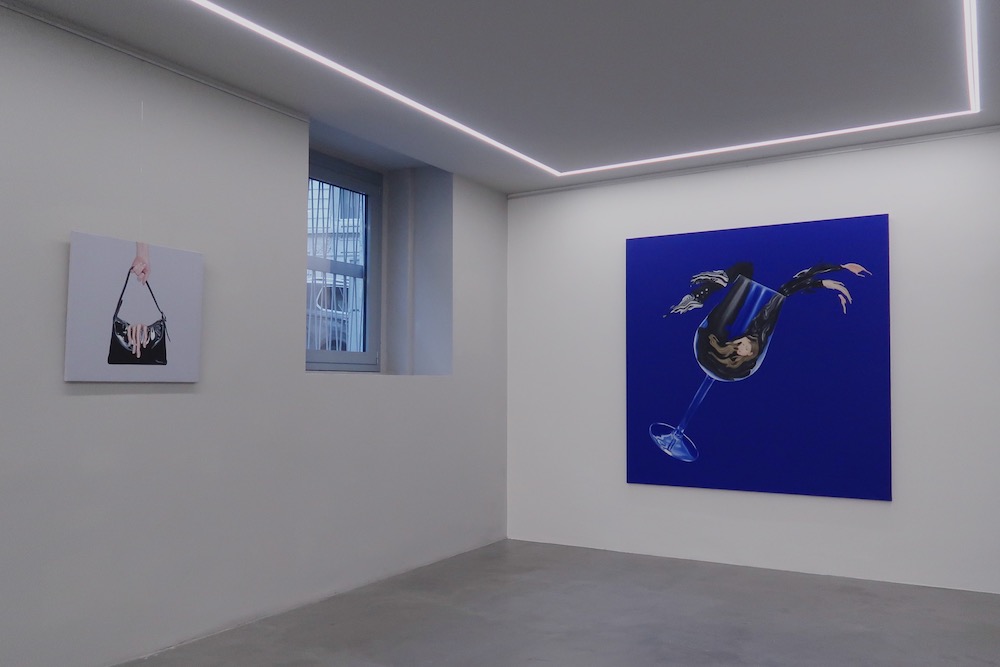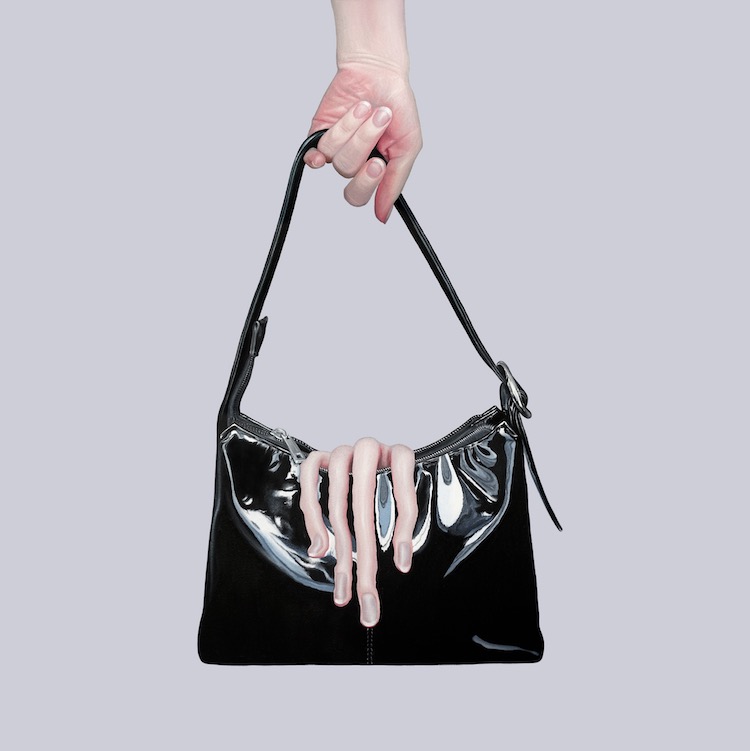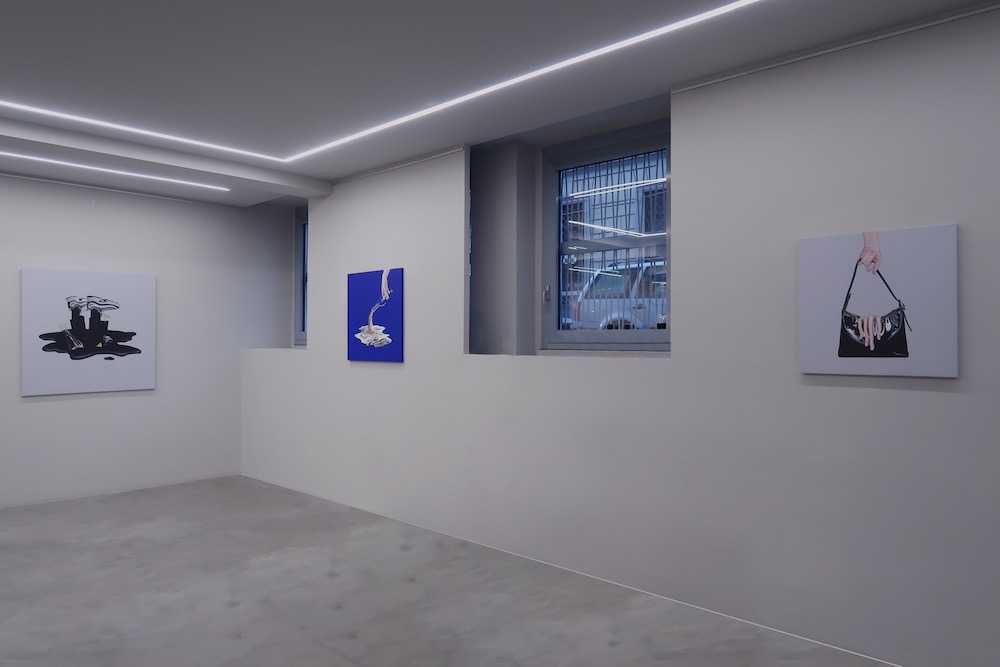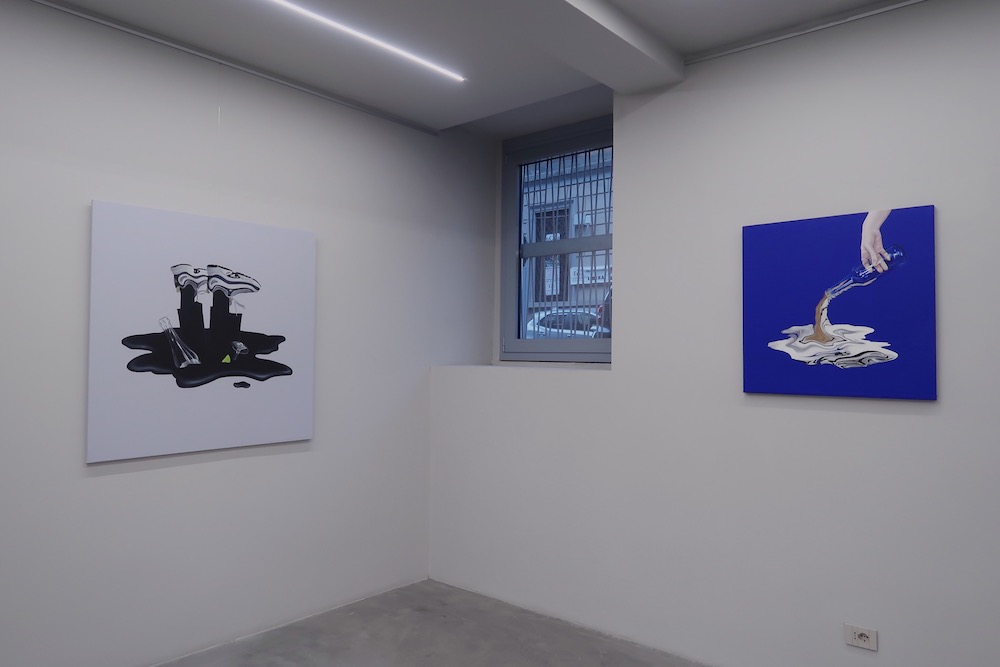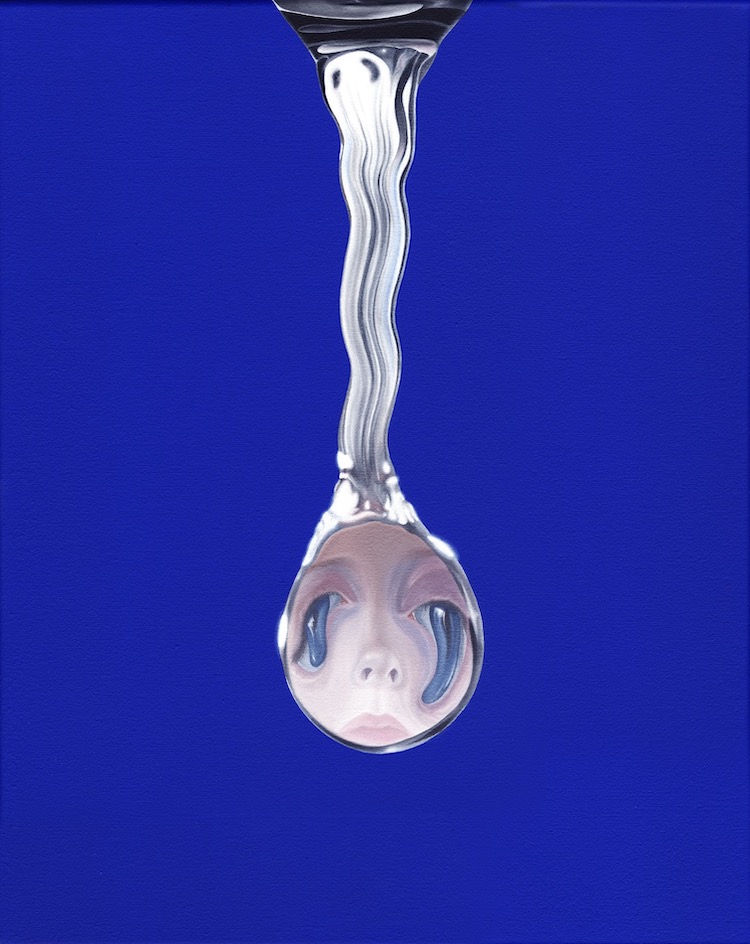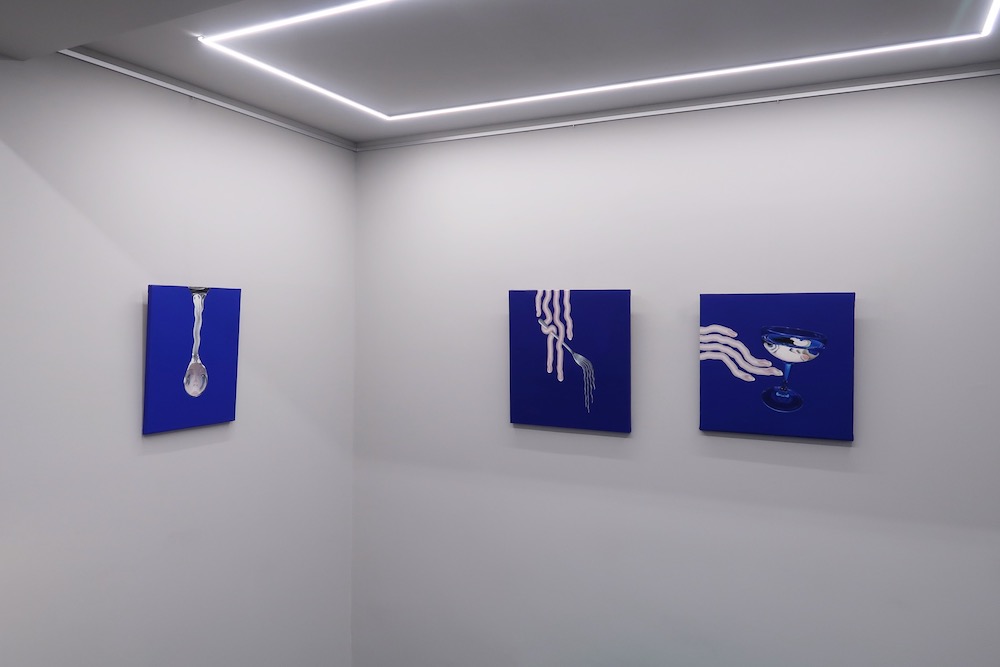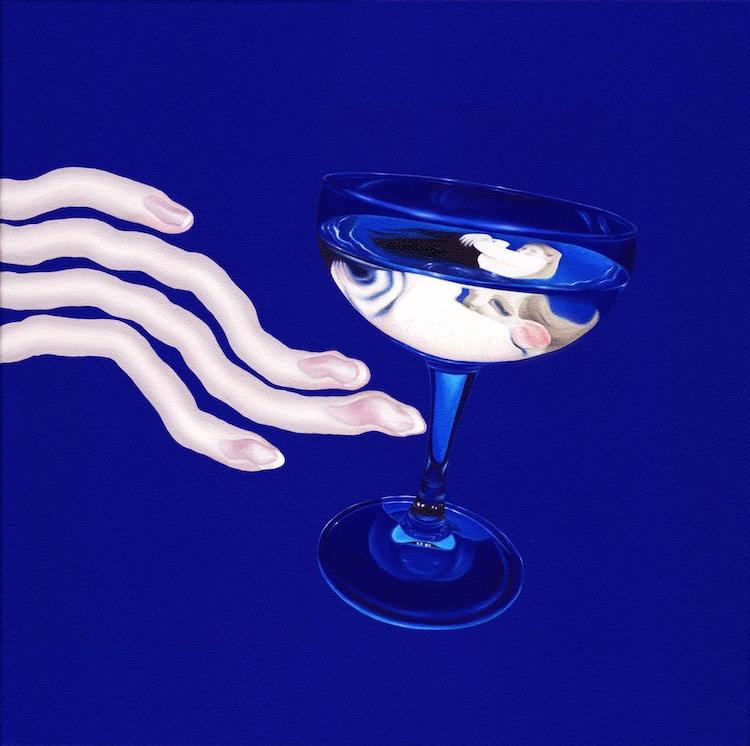The overall ambiguity alongside the indisputable actuality of the concept of “human condition” has been for centuries a pressing concern in art, anthropology, biology, history, literature, philosophy, psychology, and religion. From 16th and 17th-century vanitas works of the Low Countries to Francis Bacon’s iconic renditions of "the brutality of fact" showing the intangible, non-material, yet certainly real and existing emotions and states, was a tempting challenge. And in the age of wireless global connectivity, cyber-existence, and an abundance of information, the impact of outside effects has never been stronger. To the extent that, according to Icelandic-painter Helena Margrét Jónsdóttir and her solo show Liquida which is now on view at Plan X gallery in Milan, we’re nowadays literally melting under the pressure of our surroundings, but even more, our plain selves.
As a way of self-reflection and even amusement, Jónsdóttir is constructing surreal or even abstract visuals in which realistic elements suggest its existence in our everyday reality. Starting with the Photoshop collages, she then paints those in oil, bringing them to life as a whole, merging the factualness of the screen with the credibility of traditional oil painting. Regularly referencing herself with the depiction of objects from her imminent surroundings, from shoes, over candies, drinks, and other common items, she’s making fun of her own moments of clumsiness, misery, and different forms of awkwardness. Clashing almost photorealistic renditions of certain elements against completely distorted and dissolved silhouettes, she confronts our significance against the influence of what surrounds or defines us. This unusual high-tech melancholy with a sense of undesignated notalgia is to some extent emphasized by the experience of life on a lone island in the midst of the North Atlantic. Non apologetically self-critical, the Reykjavik-based artist repeatedly works with the same figure (self)portrayed in the void space, again evoking the sense of life on a remote island. Simply trying to relax but inexplicably and continuously failing, her protagonist is at this point turning into Liquida, a running substance without a constant form or shape.
It’s this inconstancy and fluidity that Jónsdóttir is interested in when creating the images which suggest the bodiless movement. Not saying much on its own, this sense of vitality suggests a maze of narratives that either led to or will take place after the presented scene. On one hand, referring to the invisible, but actual network that ties the world closer than ever before, the main aim of these riveting visuals is to convey emotions and states that don’t really have a physical manifestation. Willing to disclose the most personal points of weakness or moments of silliness, our colossal fragility comes center stage in these minimal, yet highly impactful works. With an abundance of negative space surrounding the withering characters, the delicate shiny glassware and desirable objects of seemingly eternal value are modern-day takes on the aforementioned Golden Age vanitas. And by laying down the mass of darkened ambiguous shapes alongisde mundane objects in the middle of blank, endless void, Jónsdóttir is transforming humanity into a mere noise that interrupts the cosmic silence. —Sasha Bogojev

